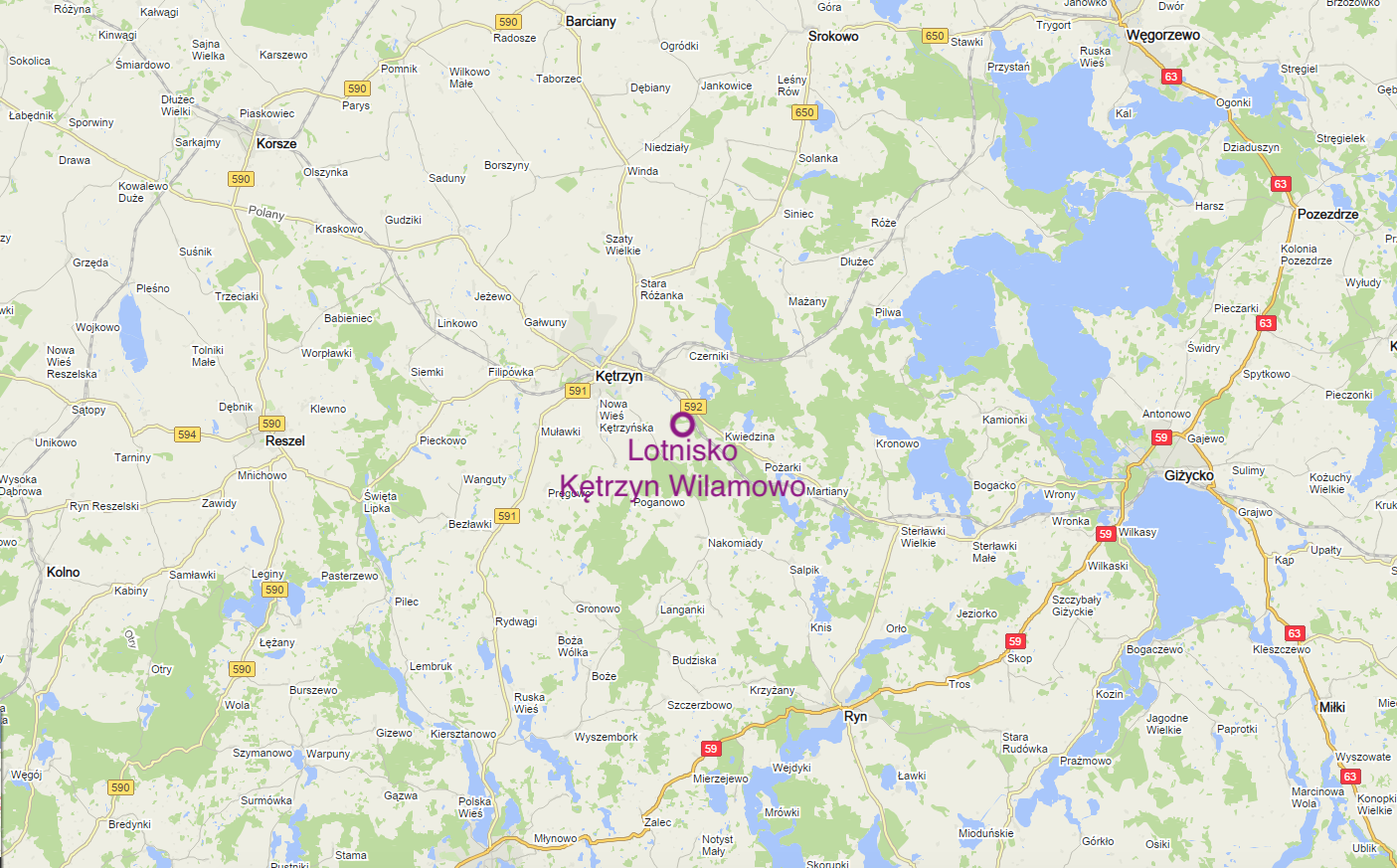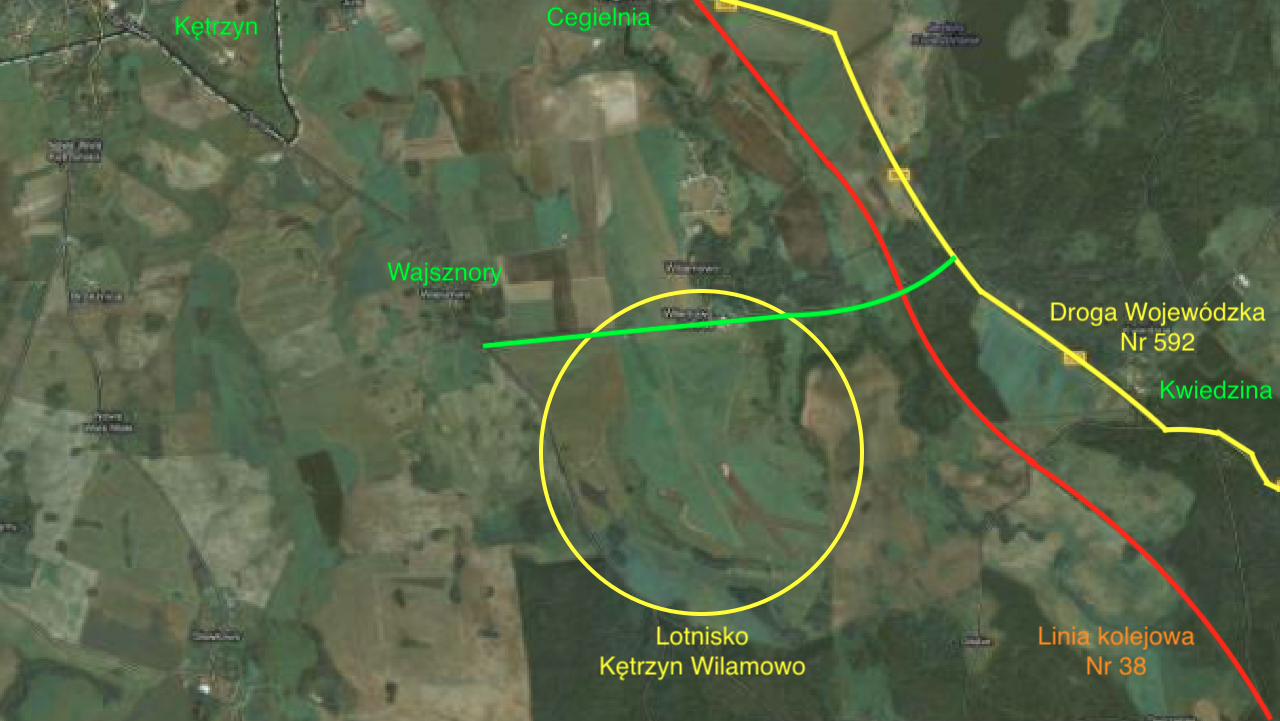Kętrzyn 2012-09-10
The Kętrzyn Wilamowo airport.
Geographic coordinates: 54.052N 21.429E. Elevation 131 m.


History of the Kętrzyn Wilamowo Airport.
In the mid-1930s, restrictions imposed on the Germans (after the Great World War) forced them to combine. The airports were built in great secret or under the guise of being intended for sports aircraft. It was under the guise of building a sports airport that the Germans began to build a facility near Kętrzyn (Restembork). Fields belonging to the town of Wajsznory (then Weischnuren) were selected for the Airport. Looking to the future, after the Second World War, the airport's name was changed to Wilamowo (Wilhelmsdorf). Wilhelmsdorf is a popular name for several municipalities that are located in Germany and Austria. We are interested in Wilhelmsdorf is an estate some buildings of which were used by airmen and airport staff. The construction of the Kętrzyn Airport was started in 1935. According to available information, the construction was carried out by the Organization Todt (Organsation Todt). This name comes from the name of its first boss Fritz Todt.
In the period 1935-1940, a small part of the aviation facilities was built. The take-off field, fuel depot, workshops and warehouses were built. The access road to the airport and numerous checkpoints were built of stone. The financial outlays were not large, because the airport was not a strategic object for the Third Reich. It was not included in the list of airports intended to take part in the aggression against the Republic of Poland, such as Szymany Airport.
Greater development of the Kętrzyn Airport took place from July 1940. It was then that a decision was made to build the so-called Hitler's headquarters, in the forests and marshes near Kętrzyn, called the "Wolf's Lair". In fact, it was the command and headquarters center of all of Germany for Eastern Europe. Something like Legnica for Russians in the years 1945-1993. The choice of the place was not accidental. It was in line with the German trend to march eastwards. The area was treated as native to the Germans. It was much closer to Moscow, lying on the Berlin-Moscow line. The direct distance between Kętrzyn and Berlin is 557 km, and between Kętrzyn and Moscow 1,054 km. Distances already achievable for non-stop transport aircraft. The "Wolf's Lair" was a complex of over 200 objects; shelters, barracks, warehouses, power plants, railway station, communication systems, complex security and defense systems. And of course the airport.
In August 1940, the construction of new runways with a concrete surface began. Such a surface was easier to maintain in winter and was insensitive to heavy rainfall. They are located in the southern part of the airport. The first runway (RWY) has dimensions of 900 m x 50 m. It was marked in the direction of 102/282 degrees. The second RWY was 950 m x 50 m. It was marked out in the direction of 140/320 degrees. Both RWYs intersected like the letter "X". Importantly, the construction of new RWYs did not interrupt the normal operation of the Airport.
The new RWYs turned out to be insufficient to accommodate the largest German aircraft. Therefore, the second RWY was extended relatively quickly to 1,200 m. The extended RWY was put into use in December 1941. Thanks to this, the airport could be used by machines such as; three-engine - Ju-52 (and its numerous versions), four-engine - Arado Ar 232, Focke-Wulf Fw 200, Junkers Ju 90, six-engine - Messerschmitt Me 323. The most frequently seen transport aircraft at the Airport was the twin-engine Siebel Si 204 (in numerous versions) . These planes mainly carried officers. The second plane often present here was the twin-engined Heinkel He 111, although more commonly known as a bomber, but there were also transport versions. It was on this plane that on July 20, 1944, the German officer Claus von Stauffenberg departed from Wilamowo Airport after an unsuccessful attempt on Hitler.
Written by Karol Placha Hetman
